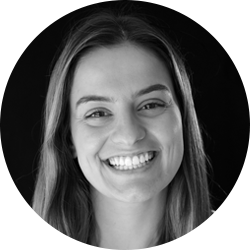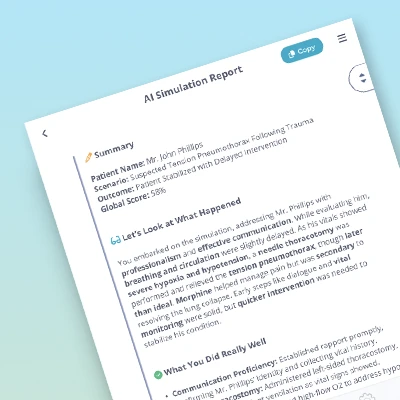How is Virtual Patient Simulation helping to prepare the next generation of healthcare professionals? Can we equalize opportunities for students?
With the help of six international experts in Medical and Nursing Education, Body Interact – Virtual Patients challenged worldwide educators to analyze and understand the impact of simulation-based learning and assessment today and in the near future.

Jim Nolan, FNP-C
Virtual Patient Simulation in Osteopathic Medical Education
Alabama College of Osteopathic Medicine
Professor Jim Nolan focused on pre-COVID-19 and post-COVID-19 teaching at the Alabama College of Osteopathic Medicine. Teaching methods for the institution and the learning methods for the students were transformed, and there was a need for action. Although the institution had already implemented a more interactive strategy, it required in-person meetings and face-to-face activities.
During this period, several market surveys were carried out and Body Interact was the one that met their learning objectives and needs. Support and training facilities were also two of the benefits highlighted by the professor. “We don’t get that customer service from any other company that we work with”, he mentioned.
In the past, osteopathic students had to go to a couple of sites to take Physical Exams (PE). PE is the process of evaluating objective anatomic findings through the use of observation, palpation, percussion, and auscultation. It is considered a mandatory exam to graduate, and all consequences of distance learning forced the institution to find an alternative.
Facing the challenges that the school battled in 2020, the school had to find a way to prove that its students were clinically competent and that they could make medical decisions. Thus, Body Interact was introduced as an Assessment strategy that allowed the school not only to analyze their performance in real-time but also do it through a flexible, ready-made, and highly effective platform. It also prevented students from paying for the exam and canceled the need to travel to complete it.
For better preparation and to ensure knowledge standardization, the school offered online tutorials on the platform usability and on the clinical cases that the simulator. Prof. Jim concluded by mentioning how the simulator “promotes students’ confidence and stimulates their willingness to be face-to-face with real patients”.
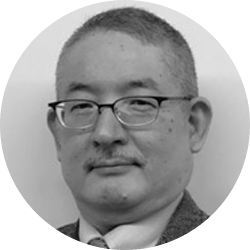
Ichiro Kaneko (MD, Ph.D.)
An International Body Interact tele-simulation lesson between Mexico and Japan
Teikyo University
Ichiro Kaneko, Professor at Teikyo University in Japan, shared with the audience an experience of classes between Mexico and Japan using Body Interact. He talked about the primitive motivation for medical students’ clinical communication skills, and concluded his presentation by discussing how “distant learning over the Pacific Ocean brings us a new opportunity for experiential learning during the pandemic years”.
As the World Federation for Medical Education recommended in the standards for Distributed and Distance Learning, this international tele-simulation trial was thus developed in August 2021:
- Connecting everyone in an Online Meeting Platform as a means of communication;
- Professor Edgar Herrera from Mexico acting as a virtual patient pretending to be a tourist in Tokyo;
- Simulation session with the Body Interact clinical scenario;
- Group discussions with both teachers.

Antonio Marttos (MD)
Overcoming challenges of Clinical Education with virtual patients
University of Miami
Antonio Marttos, Professor at the University of Miami, used his precious time to tell us about his experience with the Virtual Patient Simulation within the trauma area. The Doctor shared with us his story about using the Body Interact in different environments, countries, and with various professionals. The main goal of his interventions was to prepare teams with a great number of professionals with different levels of expertise by solving various cases to constantly learn and help each other. Ensuring learning standardization and quality of care were his two main drivers.
After a great deal of research, he met the CEO of Body Interact, Pedro Pinto. Together they decided to create a course called “Critical Decisions in Trauma” which proved to be very useful for medical training and education.
When a trauma situation happens, “the specialist has seconds to act and to make the best decisions to save the patient’s life”, highlighted Dr Marttos. Naturally, that was considered a gap and difficulty for training and learning from these events. When everything has to be done as seriously and effectively as possible, since the trauma patient can die in a minute, the space and time for educational activities are reduced. Virtual Patient Simulation was then presented as a solution.
This simulator has come to help and revolutionize the medical world when it comes to trauma. According to Dr Marttos’s opinion, thanks to the Body Interact system, “health professionals can start training and improving all their decisions in these critical environments without compromising real patient safety”. Speed of action, size of the team that is managed, guaranteeing standardization in assistance, and the diversity of clinical cases that can be encountered are some of the crucial factors that contributed to the success of the different projects he managed. Whether in Formula 1 competitions, the Olympic Games, or Trauma specialization courses, virtual patient simulation fostered quality care and great team management.
“Every person has the right to have the best medical care possible, 24/7, anywhere in the world. Education and Simulation can help to save lives!”.
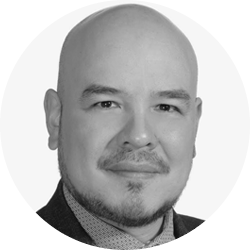
Edgar Herrera (MD, CHSE, FSSH)
Virtual Patients: The Great Equalizer in Preparing the World of Work
Mexican Society for Simulation (SOMESICS)
Edgar Herrera, President of the Mexican Society for Simulation, has given us his time to share with the IMSH audience his experience with Body Interact in Latin America, specifically in Mexico. This valuable moment was full of cultural and technical knowledge. From the peculiarities of Latin America to Medical Education data, his presentation added to all the participants.
During the pandemic, there was a huge need to look for new teaching methods since naturally there could be no physical interaction between students and teachers. A “big barrier that had to be overcome as soon as possible”, he commented. Nevertheless, in the opinion of Dr Herrera, virtual patient simulation came up to revolutionize teaching and improve the whole situation.
Today, although we are no longer in a pandemic situation, these learning procedures continue to be combined with clinical rotation hours in the hospital.

Lukas Drabauer (MD, MBA, CSA)
Simulation-based learning in the Classroom and Simulation Center
International Sim Center Advisor
Lukas Drabauer (MD, MBA, CSA) took the time to talk about his experience and professional career in the world of simulation. As an Executive Advisor in more than 50 countries, for more than 150 universities and hospitals, his main goal is to help entities implement or develop their simulation strategies or simulation centers to improve their learners’ results.
The topics of conversation were focused on an overview, challenges, and the latest best practices for implementing simulation-based learning and assessment in the institution’s curriculum.
- Analyze how other institutions are implementing digital solutions;
- Work with teachers;
- Replacing first sessions with validated digital solutions;
- Collect students’ feedback;
- Evaluation and research;
- Success will follow.
Dr. Lukas concluded that “digital solutions are solving many of the problems that exist in the medical education field” and Body Interact – Virtual Patient Simulator is presented as a validated solution. The only question for “educators and institutions is not if to start, but when to start” implementing them.

Soledad Armijo (MD, CHSE-A)
Synchronous and Asynchronous practice with Virtual Patients
Universidad del Desarrollo
Professor Soledad Armijo is a Professor and the Medical Education Office and Clinical Simulation Center of Universidad Católica del Norte, Coquimbo, Chile. She conducted a study using Body Interact to understand and analyze the impact of synchronous remote Virtual Simulation training for the initial management of ischemic stroke stroke with medical students.
Her presentation was divided into four main sections. The first was about the critical success factors for preparing students for the real world. The second was a discussion regarding the benefits to students’ progress when introducing Virtual Patients at an early stage. In the third one, Prof. Soledad highlighted the main obstacles to this adoption and lastly, in the fourth one, she explained how can educators and institutions implement a good simulation-based learning strategy in undergraduates.
Soledad Armijo demonstrated that the “critical factor for success is to work in interdisciplinary teams”. To achieve that, schools were required to implement good practices, such as:
- Employ evidence-based practice;
- Applying quality improvement;
- Using informatics;
- Acting ethically;
- Having a great intention of providing patient-centered care.
Prof. Soledad Armijo thought that the main obstacle to the adoption of Virtual Patient Simulation is students’ acceptability and value of synchronous practice with instructor-guided debriefing over the asynchronous practice with automatic feedback. For the success of this strategy, the professor mentioned a five steps list educators can follow:
- Analyze the clinical scenarios carefully;
- Select the ones that are useful for the institution’s learning objectives;
- Use a series of cases related to the same problem, adjusting to clinical practice;
- Simulate asynchronous practice with automatic feedback and supervise the use;
- Combine with a low dose of instructor-led synchronous simulation with debriefing, to get deeper reflections.
At IMSH 2023, the Body Interact team brought to you a Learning Lab with a group composed of several internationally known professionals in the field of medical and nursing education. During this activity, the audience was presented with valuable knowledge taking into account the speakers’ experience with simulation-based learning and assessment. Take the chance to review this session and dive deeper into some of the areas that these professionals explored.
By Emanuel Dinis – Marketing Curricular Internship
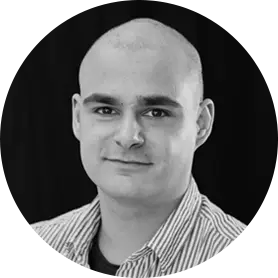
& Rita Flores – Marketing Manager
